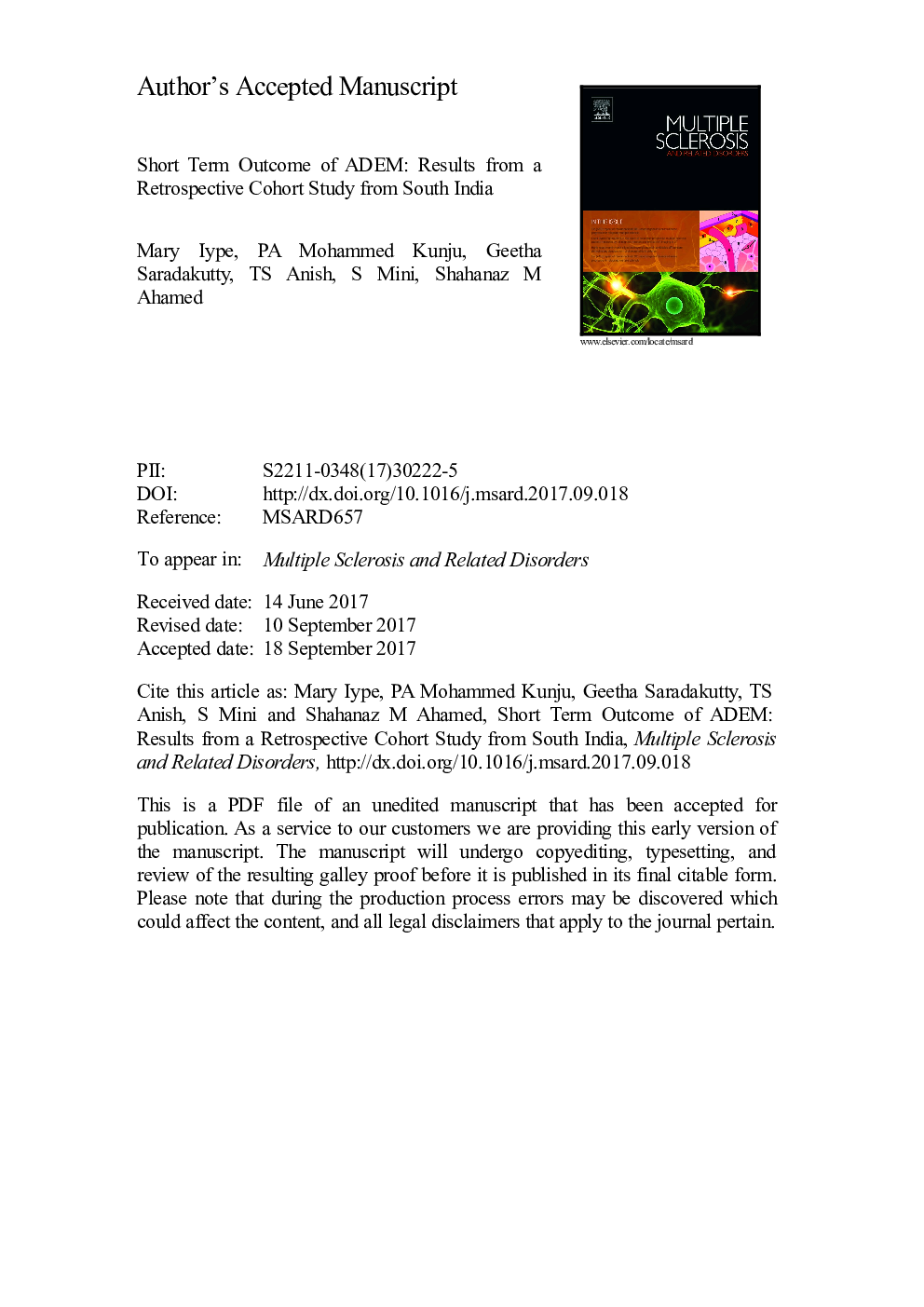| Article ID | Journal | Published Year | Pages | File Type |
|---|---|---|---|---|
| 5590798 | Multiple Sclerosis and Related Disorders | 2017 | 25 Pages |
Abstract
This study shows a profile of ADEM in South Indian children at admission and at discharge from hospital. ADEM has a good immediate outcome though death during the nadir of disease has been recorded in this study and in the literature and effort should be taken for optimal life support for these children who would have a good outcome if life support is successful. We have been able to show that, presence of myelopathy, the mean number of hours of altered sensorium and the mean duration of hospital stay were associated with a bad prognosis using three different outcome scales. Fever at admission, ventilator associated pneumonia, more profound altered sensorium at nadir of disease, signs of meningeal irritation at presentation and lower motor neuron involvement also, during the course of disease were associated with an immediate bad outcome using one of the outcome scores used in our study. Future studies should also address the question of why children with myelopathy, signs of lower motor involvement and fever at onset have a bad immediate outcome.
Related Topics
Life Sciences
Biochemistry, Genetics and Molecular Biology
Genetics
Authors
Mary Iype, P.A. Mohammed Kunju, Geetha Saradakutty, T.S. Anish, Mini Sreedharan, Shahanaz M. Ahamed,
